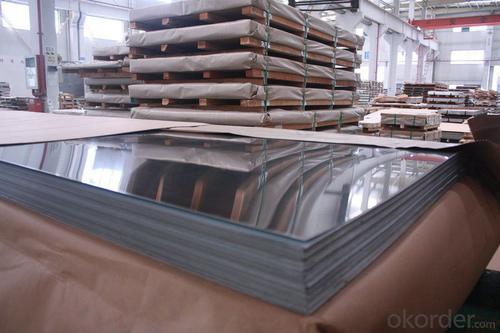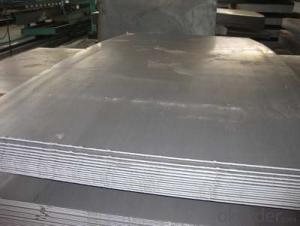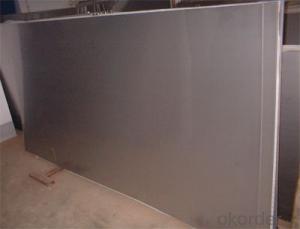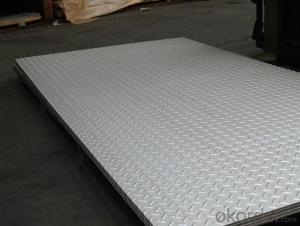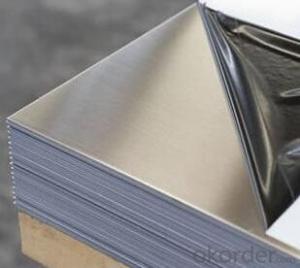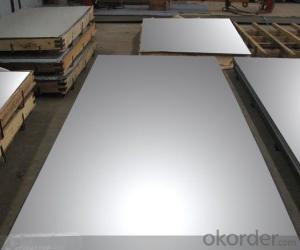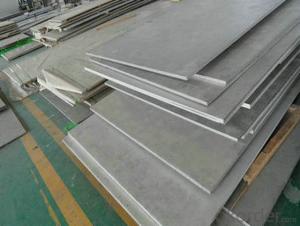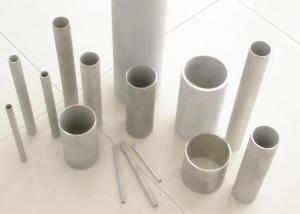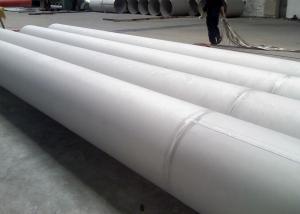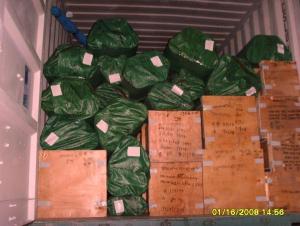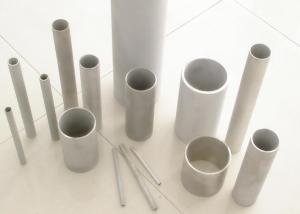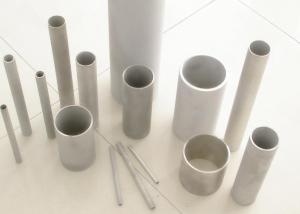ASTM/SUS 201 301 304 304l 316 316l 309S 310S 321 347 2205 410 420 430 440 631 Stainless Steel
- Loading Port:
- Shanghai
- Payment Terms:
- TT OR LC
- Min Order Qty:
- 1 m.t.
- Supply Capability:
- 20000 m.t./month
OKorder Service Pledge
OKorder Financial Service
You Might Also Like
Specification
ASTM/SUS 201 301 304 304l 316 316l 309S 310S 321 347 2205 410 420 430 440 631 Stainless Steel
Packaging Details:Wooden pallets,water proof paper-20'GP or 40'GP for stainless steel sheet.
Delivery Detail:within 5-7 days after receiving the deposit
1. Specifications about stainless steel sheet
Commodity | Professional 430 201 202 304 304l 316 316l 321 310s 309s 904l stainless steel sheet |
Grade | 201,202,304,304L,316,316L,310S,309S,321,301,310,410,420,430,904L |
Brand | TISCO ,BAOSTEEL,POSCO,JISCO,LISCO |
Certification | SGS,BV,IQI,TUV,ISO,etc |
Thickness | 0.2mm-150mm |
Width | 1000,1219,1250,1500mm, or as your requirements |
Length | 2000,2438,2500,3000,6000mm, or as your requirements |
Surface | No.1, 2B, BA, 8K Mirror, Hairline,satin, Embossed,brush,No.4,HL,matt,pvc film,laser film. |
Standard | ASTM,AISI,SUS,JIS,EN,DIN,GB, ASME,etc |
Delivery time | 5-7 days after confirming the order |
MOQ | 1 Ton |
Advantages | Showing the splendor of your quality, wearresistant as well , strong corrosion resistance and decorative effect, durable and beautiful in good taste. |
2.Production Flow about stainless steel sheet
Raw materials are sending to hot rolling units for rolling into different sizes
Hot rolled material is annealing in cold; rolled annealing furnace and pickling in acid.
All mill rolls are grinded on precision grinding machine with proper chamfering after first shiftoperation.
All sheets are pickled in different tanks and dried on brush roll machine before dispatched.
These sheets are again annealing and are sent to straighten machine for straightening.
Inspections are done at various stages. Keep proper control overall internal process via rolling,annealin and pickling by our experienced staff.
3.Surface--stainless steel sheet
| Surface Finish | Definition | Application |
| 2B | Those finished, after cold rolling, by heat treatment, pickling or other equivalent treatment and lastly by cold rolling to given appropriate luster. | Medical equipment, Food industry, Construction material, Kitchen utensils. |
BA/8K mirror | Those processed with bright heat treatment after cold rolling. | Kitchen utensils, Electric equipment, Building construction. |
| NO.3 | Those finished by polishing with No.100 to No.120 abrasives specified in JIS R6001. | Kitchen utensils, Building construction. |
| NO.4 | Those finished by polishing with No.150 to No.180 abrasives specified in JIS R6001. | Kitchen utensils, Building construction, Medical equipment. |
| Hairline | Those finished polishing so as to give continuous polishing streaks by using abrasive of suitable grain size. | Building Construction. |
| NO.1 | The surface finished by heat treatment and pickling or processes corresponding there to after hot rolling. | Chemical tank, pipe. |
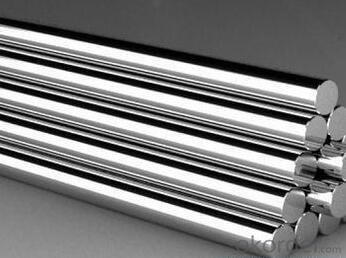
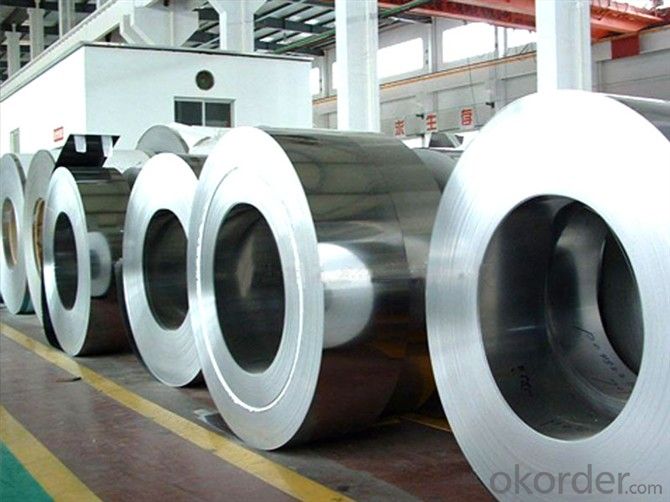

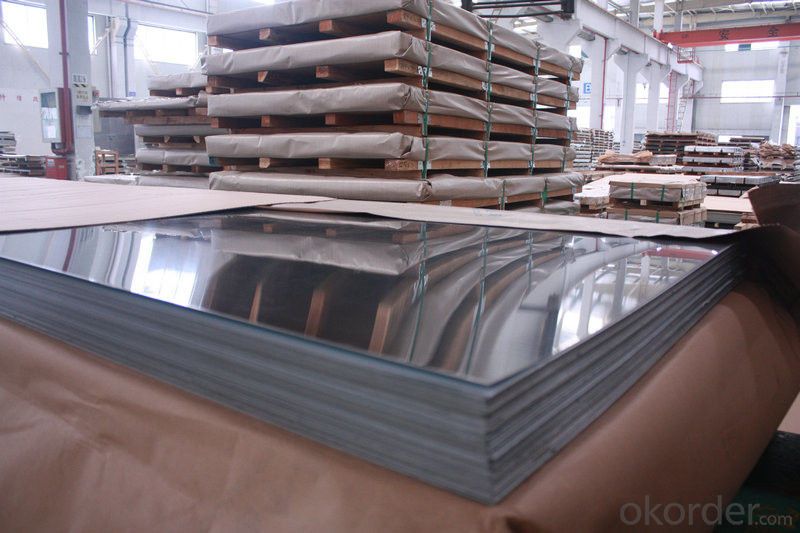
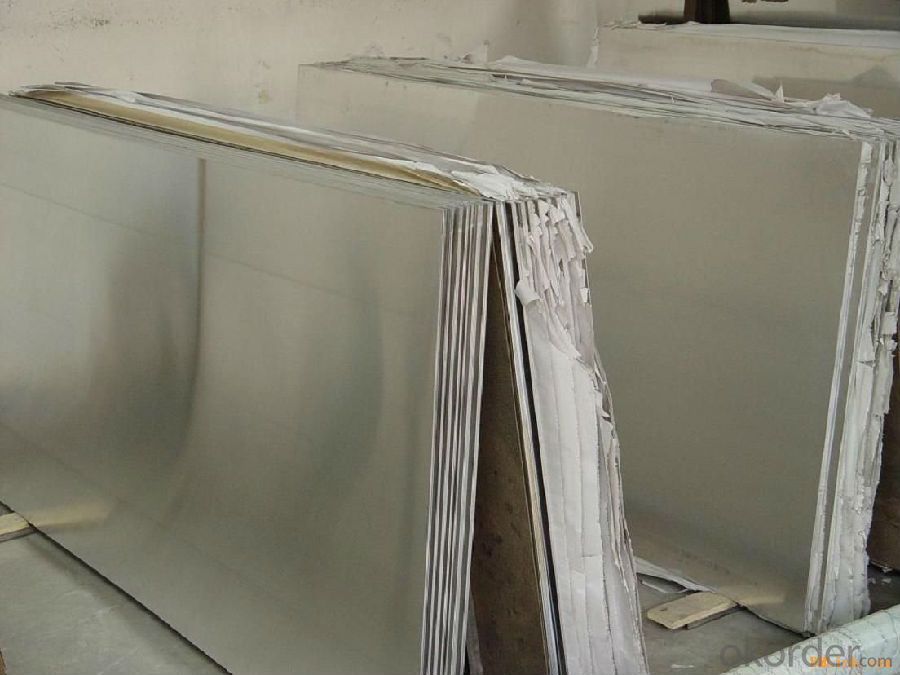
- Q: How do you remove scratches from stainless steel sheets?
- There are a few methods you can try to remove scratches from stainless steel sheets. One option is to use a non-abrasive cleaner or stainless steel polish, applying it with a soft cloth and gently rubbing the scratched area in a circular motion. Another method involves making a paste using baking soda and water, applying it to the scratch, and gently rubbing it with a soft cloth. Additionally, you can use a fine-grit sandpaper to lightly buff the scratch in the direction of the grain. Remember to always test these methods on a small, inconspicuous area first to ensure they do not damage the stainless steel.
- Q: How do you prevent fingerprints on stainless steel sheets?
- To prevent fingerprints on stainless steel sheets, you can wipe them down with a clean microfiber cloth or use a stainless steel cleaner specifically designed to repel fingerprints. Additionally, handling the sheets with clean, dry hands and avoiding touching them unnecessarily can help minimize fingerprint smudges.
- Q: What are the different types of surface treatments for stainless steel sheets?
- There are several types of surface treatments for stainless steel sheets, including brushing, grinding, polishing, and coating. Brushing creates a textured finish, grinding removes imperfections, polishing enhances shine, and coating adds a layer of protection.
- Q: What is the typical thickness range for stainless steel sheets?
- The specific application and requirements determine the typical thickness range of stainless steel sheets. Generally, these sheets are readily available in thicknesses ranging from 0.4mm to 6mm. Thinner sheets, in the range of 0.4mm to 1mm, find common usage for decorative purposes or in applications that demand flexibility. Conversely, thicker sheets are extensively employed in structural or industrial applications that necessitate strength and durability. It is worth mentioning that these thickness ranges are not exhaustive, and customized stainless steel sheets can be fabricated to fulfill project-specific requirements.
- Q: Are stainless steel sheets resistant to staining from food?
- Yes, stainless steel sheets are highly resistant to staining from food.
- Q: What are the different types of perforated patterns available for stainless steel sheets?
- There are several different types of perforated patterns available for stainless steel sheets, including round, square, slotted, and decorative patterns. Each pattern offers a unique aesthetic appeal and functional characteristics, making it suitable for various applications.
- Q: How do I prevent stress relaxation on stainless steel sheets?
- Stress relaxation is a phenomenon that occurs in stainless steel sheets when they are subjected to prolonged exposure to high temperatures or constant stress. To prevent stress relaxation on stainless steel sheets, you can take the following measures: 1. Proper selection of stainless steel grade: Different grades of stainless steel have varying resistance to stress relaxation. Choose a grade that offers high resistance to this phenomenon, such as austenitic stainless steels like Type 304 or Type 316. 2. Avoid excessive temperatures: Stainless steel sheets should be operated within their recommended temperature limits. Exposing them to temperatures beyond their specified range can accelerate stress relaxation. Ensure that the operating temperature remains within the permissible limits. 3. Control the stress levels: Minimize the stress levels applied to the stainless steel sheets during fabrication and installation. Avoid excessive bending, stretching, or deformation that could introduce stress into the material. Properly design and fabricate the components to reduce stress concentration points. 4. Post-weld heat treatment: If the stainless steel sheets are welded, consider performing a post-weld heat treatment. This process involves subjecting the welded area to controlled heating and cooling cycles to relieve residual stresses and minimize the potential for stress relaxation. 5. Reduce exposure to aggressive environments: Stainless steel sheets are corrosion-resistant, but exposure to aggressive chemicals or environments can accelerate stress relaxation. Avoid prolonged exposure to corrosive substances or environments that may compromise the material's integrity and cause stress relaxation. 6. Regular inspections and maintenance: Periodically inspect the stainless steel sheets for signs of stress relaxation, such as deformation, cracks, or changes in dimensions. Regular maintenance and timely repairs can help identify and address any issues before they worsen. 7. Consult with experts: If you are unsure about the specific requirements to prevent stress relaxation in your stainless steel sheets, consult with metallurgical experts or stainless steel manufacturers. They can provide guidance on the best practices and materials to ensure long-term performance and prevent stress relaxation. By implementing these preventive measures, you can significantly reduce the risk of stress relaxation in stainless steel sheets, ensuring their durability and maintaining their structural integrity over time.
- Q: Can stainless steel sheets be painted?
- Yes, stainless steel sheets can be painted. However, it is important to properly prepare the surface to ensure good adhesion. This typically involves cleaning, sanding, and applying a primer before painting.
- Q: Are stainless steel sheets suitable for outdoor sculptures or artwork?
- Outdoor sculptures or artwork can greatly benefit from the use of stainless steel sheets. This material is renowned for its exceptional durability and resistance to corrosion and weathering, making it the ideal choice for outdoor installations. Regardless of the harsh environmental conditions, such as rain, snow, UV rays, and temperature fluctuations, stainless steel retains its structural integrity and aesthetic appeal. Moreover, artists and designers can easily shape, cut, and weld stainless steel, allowing for the creation of intricate and complex sculptures. Its sleek and modern appearance also adds a contemporary touch to any outdoor setting. Additionally, stainless steel requires minimal maintenance and can maintain its original finish for an extended period, making it a cost-effective option for outdoor sculptures or artwork. In conclusion, stainless steel sheets are an excellent material choice for creating visually appealing and long-lasting outdoor artworks.
- Q: Are stainless steel sheets suitable for food processing and storage?
- Stainless steel sheets are incredibly well-suited for food processing and storage. The food industry favors stainless steel for its multitude of advantages. To begin with, stainless steel is a non-reactive material, guaranteeing that it won't release any harmful chemicals or flavors into the food. This attribute makes it perfectly safe for storing and processing all sorts of food, including those with acidic or alkaline components. Furthermore, stainless steel is highly resistant to corrosion and rust, ensuring that the food products remain hygienic and last for a long time. Additionally, stainless steel boasts exceptional heat resistance, enabling it to endure high temperatures during cooking and processing without bending or distorting. Its smooth and non-porous surface also makes it effortless to clean and maintain. This is particularly crucial in food processing facilities where cleanliness and hygiene are of utmost importance. Moreover, stainless steel is a durable material that can withstand heavy use and frequent cleaning. It resists impact, staining, and scratching, making it the perfect choice for food processing equipment and storage containers that undergo regular wear and tear. In conclusion, stainless steel sheets are highly suitable for food processing and storage due to their non-reactive nature, corrosion resistance, heat resistance, ease of maintenance, and durability. They offer a safe and hygienic environment for food processing, ensuring the quality and integrity of the food products.
Send your message to us
ASTM/SUS 201 301 304 304l 316 316l 309S 310S 321 347 2205 410 420 430 440 631 Stainless Steel
- Loading Port:
- Shanghai
- Payment Terms:
- TT OR LC
- Min Order Qty:
- 1 m.t.
- Supply Capability:
- 20000 m.t./month
OKorder Service Pledge
OKorder Financial Service
Similar products
Hot products
Hot Searches
Related keywords






